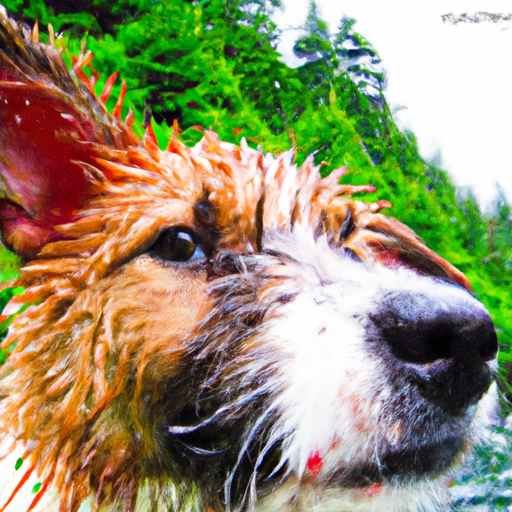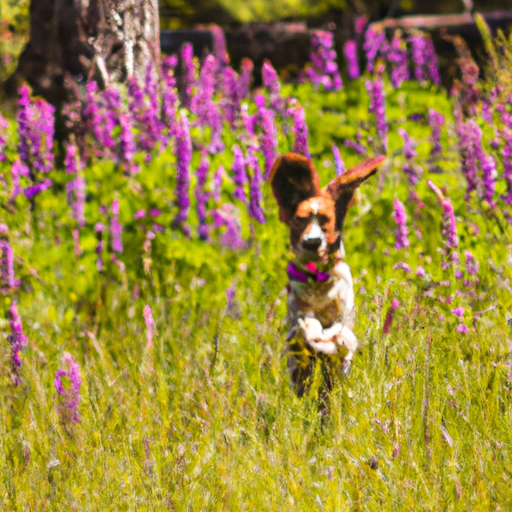If you've recently welcomed a furry addition into your family, then you know just how adorable and mischievous puppies can be. While they bring immense joy and endless cuddles, it's also important to ensure they grow up to be well-behaved and obedient dogs. That's where basic puppy obedience training comes in. In this article, we'll explore the essential techniques and tips to help you lay the foundation for a happy and harmonious relationship with your furry friend. So, grab your pup's favorite treats and get ready to embark on a fun and rewarding journey of teaching your puppy good manners and behaviors.
Choosing the right training method
When it comes to training your new furry friend, it's important to choose a method that suits both you and your dog. There are several popular training methods to consider, and each has its own advantages and disadvantages.
Positive reinforcement
Positive reinforcement is a highly effective and widely-used training method that focuses on rewarding desired behaviors. This method involves praising and rewarding your dog when they exhibit the behavior you want them to learn. By using treats, toys, or verbal praise, you can reinforce positive behaviors and encourage your pup to continue behaving in the desired way.
Clicker training
Clicker training is a form of positive reinforcement training that utilizes a small device called a clicker. This method involves pairing the sound of the clicker with a reward, such as a treat. The clicker becomes a signal to your dog that they have performed the desired behavior, and they will soon associate the sound with the reward. Clicker training can be a fun and effective way to communicate with your dog and teach them new commands.
Traditional training
Traditional training methods have been used for many years and often involve more dominant or correction-based techniques. These methods rely on establishing yourself as the “alpha” or pack leader and using punishment to deter unwanted behaviors. While this approach may work for some dogs, it's important to note that it can have negative effects on the bond between you and your pet. It's essential to use these methods with caution and seek guidance from a professional trainer if needed.
Creating a training schedule
Consistency is key when it comes to training your puppy. Establishing a regular training schedule will not only help your dog learn more quickly, but it will also provide structure and stability for them. Here are some essential elements to consider when creating your training schedule:
Consistency
Consistency is crucial when it comes to training your puppy. It's important to use the same cues and commands consistently so that your dog can understand what you expect from them. Additionally, consistency in your training sessions will help reinforce the lessons you are teaching your pup.
Short and frequent sessions
Puppies have short attention spans, so it's best to keep training sessions short and frequent. Aim for multiple short sessions throughout the day rather than one long session. This will prevent your puppy from becoming overwhelmed and ensure that they remain engaged and focused.
Include obedience exercises
In addition to teaching basic commands, incorporate obedience exercises into your training schedule. These exercises can include heel walking, sit-stay, and recall training. Obedience exercises will help your puppy learn to listen to you and respond to your commands in various situations.
Teaching basic commands
Teaching your puppy basic commands is an essential part of their training journey. These commands will not only make your life easier but will also help keep your puppy safe. Here are some basic commands to start with:
Sit
The “sit” command is one of the first commands you should teach your puppy. Begin by holding a treat close to your dog's nose and slowly move your hand upward. As your puppy follows the treat with their nose, their bottom will naturally lower into a sitting position. As soon as they sit, reward them with the treat and praise.
Stay
Once your puppy has mastered the sit command, you can begin teaching them to stay. Start by asking your puppy to sit, then hold your palm out in front of you and say “stay.” Take a small step back and wait a moment before returning to your puppy and rewarding them for staying in place. Gradually increase the duration and distance of the stay command over time.
Lie down
To teach your puppy to lie down, start with them in a sitting position. Hold a treat close to their nose and slowly lower it to the ground. As your puppy follows the treat, their body should naturally lower into a lying position. Once they are fully lying down, reward them with the treat and praise.
Come
The “come” command is crucial for ensuring your puppy's safety. Begin by getting down to your puppy's level and calling their name in an upbeat tone. As they start to approach you, encourage them with praise and rewards. Gradually increase the distance between you and your puppy as they become more comfortable with the command.
Leave it
The “leave it” command is useful for preventing your puppy from picking up or chewing on something they shouldn't. Start by showing your puppy a treat in your closed hand and say “leave it.” When they stop trying to get the treat out of your hand, reward them with a different treat and praise.
Drop it
Teaching your puppy to “drop it” is essential for preventing them from hoarding or chewing on objects they shouldn't have. Start by offering your puppy a toy or object they enjoy playing with. As they play with it, offer them a treat and say “drop it.” When they release the object, reward them with the treat and praise.
Promoting socialization
Promoting socialization is crucial for creating a well-rounded and confident dog. Exposing your puppy to various environments, other dogs, and different people will help them develop positive relationships and reduce the chances of behavioral issues in the future.
Expose to new environments
Take your puppy to different places, such as parks, pet-friendly stores, and outdoor events. Allow them to experience different sights, sounds, and smells. This exposure will help them become accustomed to new environments and reduce the chances of fear or anxiety in unfamiliar situations.
Introduce to other dogs
Socializing your puppy with other dogs is vital for their development. Arrange playdates with vaccinated and friendly dogs, ensuring the interactions are positive and supervised. This will help your puppy learn appropriate social skills and prevent any fear or aggression towards other dogs.
Meeting different people
Introduce your puppy to a variety of people, including children, adults, and individuals wearing different clothing or accessories. Encourage polite and calm interactions, rewarding your puppy for appropriate behavior. This exposure will help your puppy feel more confident and comfortable around different types of people.
Managing behavior issues
As your puppy grows, it's natural for them to exhibit certain behavior issues. Fortunately, most of these issues can be managed and resolved with proper training and consistency. Here are some common behavior issues and tips for addressing them:
Biting and nipping
Puppies often explore the world with their mouths, which can result in biting and nipping. When your puppy bites or nips, let out a yelp or say “ouch” in a high-pitched voice to communicate that it hurts. Immediately redirect their attention to an appropriate chew toy, and praise and reward them for chewing on the toy instead.
Chewing
Chewing is a natural behavior for puppies, but it can become problematic if they chew on your furniture or personal belongings. Provide your puppy with appropriate chew toys and encourage them to chew on those instead. If you catch them chewing on something they shouldn't, redirect their attention to a toy and remove the inappropriate item.
Jumping on people
When your puppy jumps on people, it's essential to discourage this behavior and teach them a more polite greeting. Turn away from your puppy and avoid eye contact when they jump, as this removes the attention they seek. Once they have all four paws on the ground, reward them with attention and praise.
Excessive barking
Excessive barking can be a challenge to manage, but it's important to address this behavior early on. Determine the cause of the barking, such as boredom, fear, or protecting territory, and address it accordingly. Engage your puppy in mental and physical stimulation, provide them with appropriate toys, and seek professional guidance if the barking persists.
Potty training
Potty training is a fundamental aspect of training your puppy. Establish a routine for bathroom breaks and take your puppy outside frequently, especially after meals, playtime, and naps. Reward your puppy for eliminating in the appropriate spot and clean any accidents indoors with an enzymatic cleaner to remove the scent and discourage repeat accidents.
Using positive reinforcement
Positive reinforcement is a powerful tool in training your puppy and fostering a strong bond with them. Here are some tips for effectively using positive reinforcement:
Rewarding good behavior
Consistently reward your puppy for exhibiting good behavior. Whether it's sitting patiently, walking calmly on a leash, or following a command, provide verbal praise, petting, and occasional treats. This positive reinforcement will motivate your puppy to continue behaving in the desired way.
Using treats and praises
Treats are a common and effective form of positive reinforcement. Use small, soft, and easily consumable treats that your puppy enjoys. Combine treats with verbal praise and enthusiastic tone of voice to communicate your satisfaction with their behavior.
Timing is important
Timing is essential when using positive reinforcement. Deliver the reward immediately after your puppy exhibits the desired behavior. This will help them associate the reward with the specific behavior, making it easier for them to understand what you are asking of them.
Implementing clicker training
Clicker training can be a fun and efficient way to teach your puppy new commands and behaviors. Here's how to implement this training method:
Conditioning the click
Before using the clicker as a training tool, you need to condition your puppy to associate the sound of the clicker with a reward. Click the device and immediately offer a treat. Repeat this process multiple times until your puppy starts to anticipate the treat whenever they hear the click.
Teaching commands with the clicker
Once your puppy understands the meaning of the click, you can use it to mark desired behaviors. For example, when teaching the “sit” command, click as your puppy's bottom touches the ground, and immediately follow with a reward. The clicker becomes a clear signal that the behavior is correct, which helps your pup understand what you are asking of them.
Variable reinforcement
As your puppy becomes more proficient in their training, introduce variable reinforcement. Instead of rewarding every correct behavior, gradually vary the timing and frequency of the rewards. This helps your puppy understand that they won't always receive a reward but should continue offering the desired behavior in anticipation of reinforcement.
Understanding traditional training
Traditional training methods have been used for many years, but it's essential to understand their principles and potential drawbacks. Here are some key points to consider:
Alpha dog theory
The alpha dog theory is based on the idea that dogs are pack animals and should view their human owners as the “alpha” or pack leader. Traditional trainers often emphasize the need for dominance and assertiveness when interacting with dogs. However, modern research suggests that dogs are more responsive to positive reinforcement and building a trusting relationship rather than relying on dominance-based methods.
Correction-based methods
Traditional training methods often involve the use of corrections or punishments to discourage unwanted behaviors. Physical punishments, such as leash corrections or alpha rolls, can lead to fear and anxiety in your puppy. It's important to understand the potential impact these methods can have on the emotional well-being and trust between you and your pet.
Consistency and firmness
Traditional training methods prioritize consistency and firmness in setting boundaries and expectations for your puppy. While consistency is important in any training method, it's equally important to remember that positive reinforcement and clear communication can create a stronger bond between you and your pet.
Setting up a training area
Having a designated training area can help create a focused environment for your puppy's training sessions. Here are some tips for setting up a training area:
Designated space
Choose a quiet and relatively distraction-free area in your home or yard where you can conduct training sessions with your puppy. This area should be comfortable for both you and your pup, ensuring there is enough space to move around and practice different commands.
Use of training aids
Consider using training aids such as clickers, treats, and toys to enhance your training sessions. These aids can help reinforce desired behaviors and make the learning process more enjoyable for your puppy.
Eliminating distractions
Minimize distractions in the training area to help your puppy stay focused. Close doors to other rooms, turn off the TV or radio, and remove any toys or objects that may distract your dog from training. By reducing distractions, both you and your puppy can concentrate on the task at hand.
Hiring a professional trainer
If you're feeling overwhelmed or struggling to train your puppy effectively, seeking the guidance of a professional trainer can be beneficial. Here are some reasons why hiring a professional trainer may be advantageous:
Benefits of professional guidance
Professional trainers have the experience and knowledge to address specific behavior issues, tailor training techniques to your puppy's individual needs, and provide valuable guidance throughout the training process. They can offer different perspectives, troubleshooting tips, and support to ensure you and your puppy are on the right track.
Evaluating a trainer's qualifications
When looking for a professional trainer, consider their qualifications, certifications, and experience in dog training. It's important to find a trainer who uses positive reinforcement techniques and has a proven track record of success.
Cost considerations
While hiring a professional trainer may involve some financial investment, it's crucial to weigh the benefits against the cost. Proper training can prevent future behavior issues and strengthen the bond between you and your puppy, making it a worthwhile investment in your dog's well-being and your relationship with them.
In conclusion, training your puppy is an essential part of their development and well-being. By choosing the right training method, creating a consistent training schedule, teaching basic commands, promoting socialization, managing behavior issues, and using positive reinforcement techniques, you can lay the foundation for a well-behaved and happy companion. Remember to be patient, kind, and consistent in your training efforts, and always seek professional guidance when needed. With dedication and love, you and your puppy can embark on a successful training journey together.






